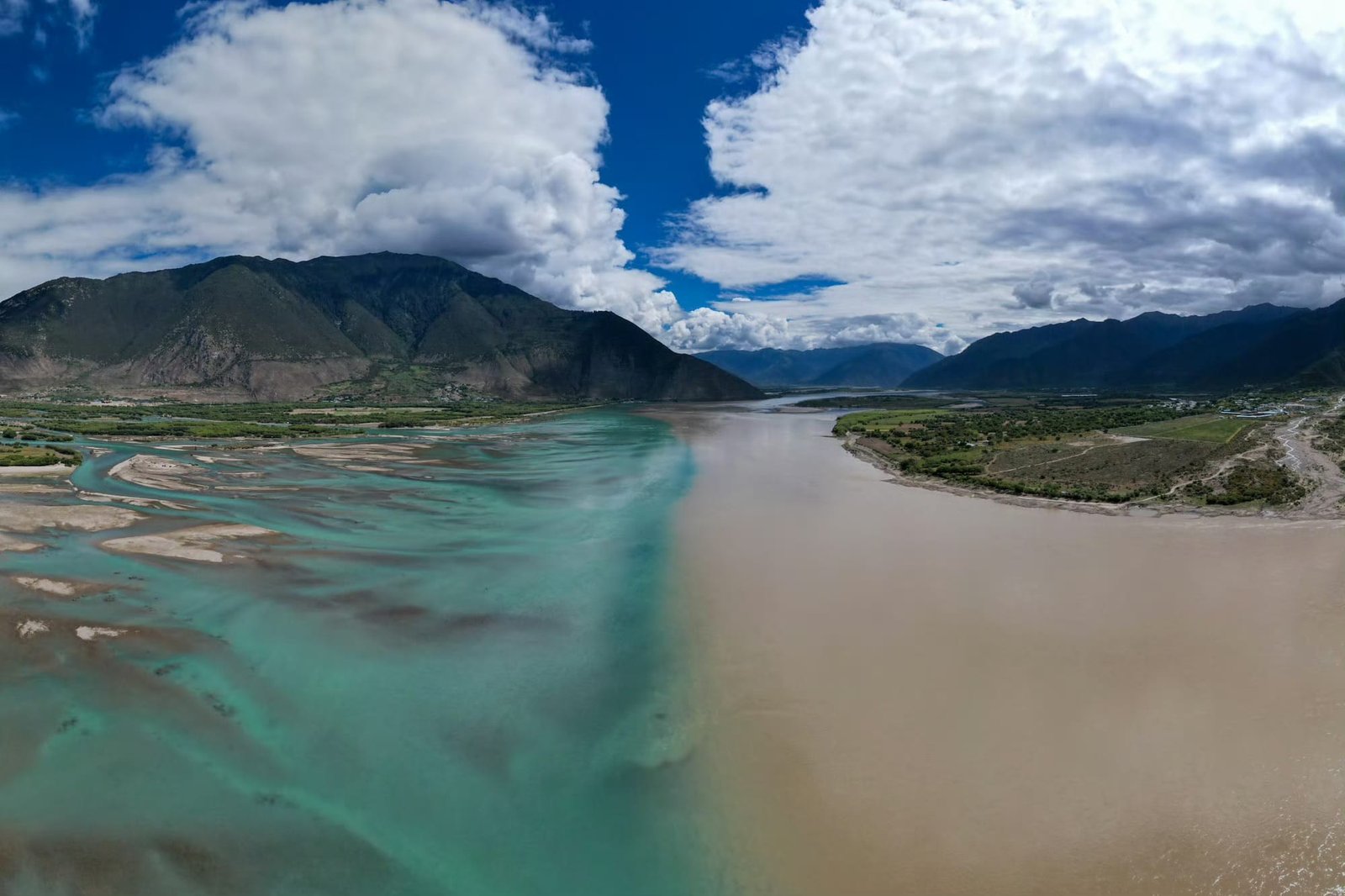Introduction to Ngom Chu (Angqu)
Ngom Chu (formerly known as 昂曲 Angqu) translates to “Great Mighty River” or “Majestic River.” Flowing through Karuo District in Chamdo, Tibet, this pristine waterway originates in the northeastern highlands at an elevation of over 5,000 meters. It follows a north-south course before curving westward, eventually merging with the Requ (Richu) River and flowing into the Zhaqu River, a major tributary of the Lancang (Mekong) River (Tibetan: རྫ་ཆུ.)
Geographical and Ecological Features
Situated within the rugged terrain of the Hengduan Mountains, Ngom Chu (Angqu)exhibits a diverse landscape with significant ecological and economic importance.
Upper Reaches
- The terrain is relatively flat, forming a hilly plateau with little elevation variation.
- This region receives abundant rainfall, leading to widespread wetlands and lush plateau meadows.
- The local economy thrives on traditional animal husbandry, with Tibetan yaks, sheep, and cattle grazing on the fertile grasslands.
Middle Reaches
- From the confluence of Shamuqu (Samuchu) to Baqu (bachu) , the river valley widens, with well-developed terraces suitable for agriculture.
- Vegetation consists mainly of meadows and shrubs, with small patches of forest scattered throughout.
- Agriculture is the primary livelihood, supplemented by small-scale animal husbandry.
Lower Reaches
- Below the confluence of Baqu, the river carves deep valleys, creating a dramatic landscape of cliffs and gullies.
- The region supports a mix of shrubs and small forests, offering a suitable habitat for diverse wildlife.
- Agriculture and animal husbandry remain integral to the local economy.
- The city of Chamdo, located at the river’s mouth, serves as the largest commercial hub in eastern Tibet.
Hydropower Development on Ngom Chu
The Zongtongka Hydropower Project, currently under construction along the lower reaches of Ngom Chu, (Angqu) aims to harness the river’s potential for clean energy generation. Key project details include:
- A 71-meter-high asphalt concrete core wall rockfill dam.
- A total storage capacity of 124.6 million cubic meters, with a regulating storage capacity of 44.8 million cubic meters.
- A total investment of approximately 5.716 billion yuan, with 279.76 million yuan dedicated to environmental protection.
- A power station with an installed capacity of 104,000 kilowatts (2×42,500 kilowatts + 2×9,500 kilowatts).
- Additional infrastructure for water supply, irrigation, and spring water diversion, benefiting an irrigation area of 18,800 mu.
Importance of Ngom Chu
The river plays a vital role in sustaining the region’s environment, economy, and cultural heritage.
1. Supports Nomadic and Agricultural Livelihoods
Ngom Chu provides essential water resources for grazing lands, farming, and local fisheries, making it a lifeline for Tibetan communities.
2. Integral to Chamdo’s Hydrological Network
As a tributary of the Zhaqu River, which feeds into the Mekong River system, Ngom Chu contributes significantly to Tibet’s complex water network.
3. Rich Biodiversity and Aquatic Life
The river is home to Schizothorax fish (Tibetan naked carp), a species uniquely adapted to high-altitude freshwater environments.
4. Scenic Beauty & Ecotourism Potential
With its breathtaking landscapes, pristine grasslands, and rich biodiversity, Ngom Chu (Angqu) is an emerging destination for eco-tourists, trekkers, and adventure travelers.
Explore the Untouched Beauty of Karuo District
For travelers seeking an authentic Tibetan experience, Ngom Chu offers a glimpse into the unspoiled natural beauty of Chamdo. Whether exploring the vast meadows, witnessing nomadic culture, or marveling at the high-altitude wilderness, this majestic river stands as a testament to Tibet’s awe-inspiring landscapes and ecological wealth.
Conclusion
Ngom Chu (Angqu) remains one of Tibet’s most important waterways, blending natural splendor with cultural significance. As it continues to support local livelihoods and drive sustainable development, it holds immense potential for conservation, tourism, and renewable energy. Whether you’re an explorer, a nature enthusiast, or someone captivated by Tibet’s untouched beauty, Ngom Chu is a destination that promises to inspire and amaze.









